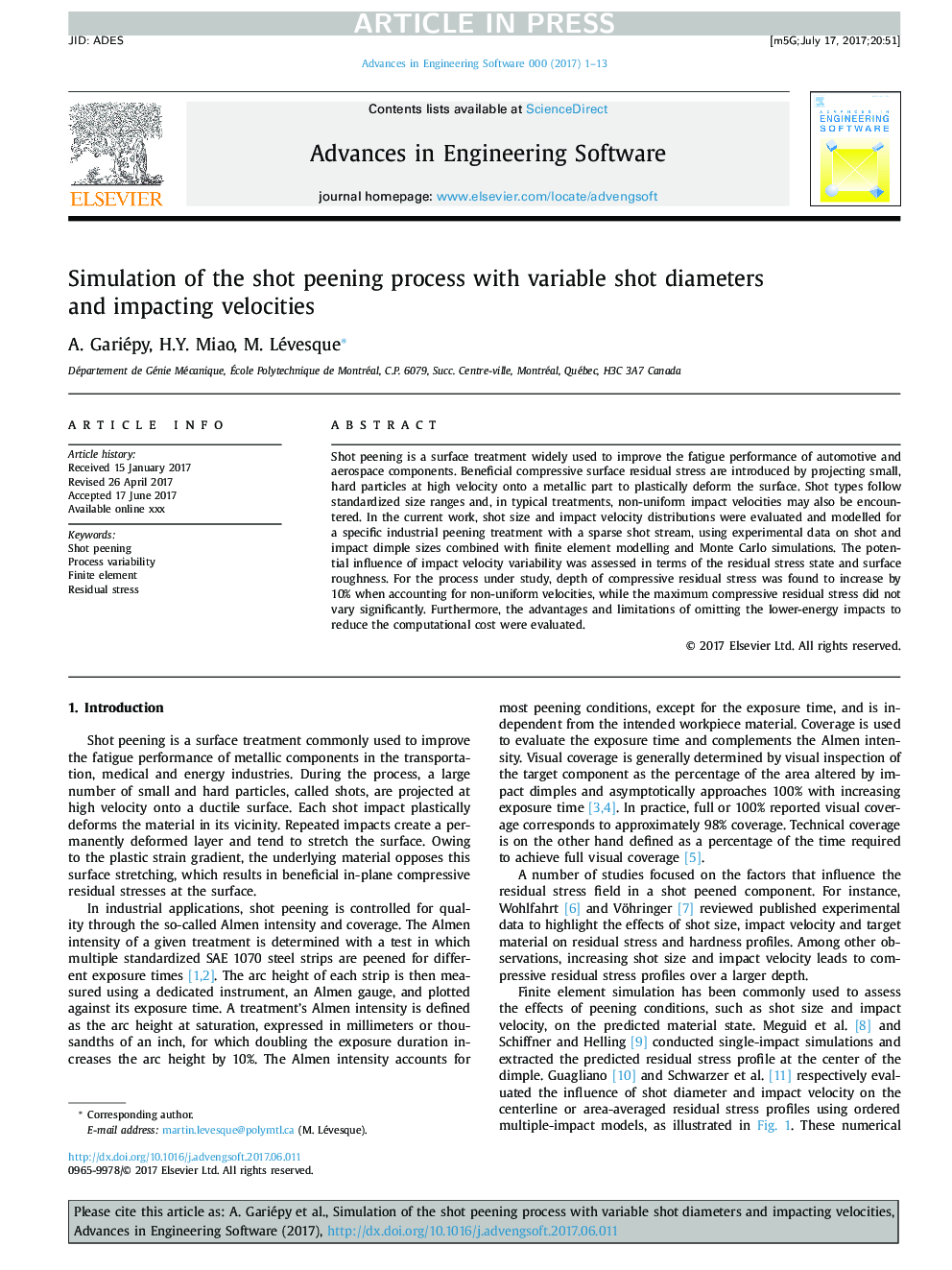| کد مقاله | کد نشریه | سال انتشار | مقاله انگلیسی | نسخه تمام متن |
|---|---|---|---|---|
| 6961554 | 1452103 | 2017 | 13 صفحه PDF | دانلود رایگان |
عنوان انگلیسی مقاله ISI
Simulation of the shot peening process with variable shot diameters and impacting velocities
ترجمه فارسی عنوان
شبیه سازی فرآیند شستشوی شات با قطر متغیر شات و سرعت ضربه
دانلود مقاله + سفارش ترجمه
دانلود مقاله ISI انگلیسی
رایگان برای ایرانیان
کلمات کلیدی
ساچمه زنی، متغیر فرآیند، المان محدود، استرس باقی مانده،
ترجمه چکیده
شستشوی پینینگ یک روش سطح است که به طور گسترده ای برای بهبود عملکرد خستگی اجزای خودرو و هوا فضا استفاده می شود. استرس باقی مانده سطحی فشرده مطلوب توسط طراحی ذرات کوچک و سخت با سرعت بالا بر روی یک بخش فلزی به صورت پلاستیک تغییر شکل داده می شود. انواع شات از محدوده اندازه استاندارد به دست می آیند و در درمان های معمول نیز ممکن است سرعت های غیر یکنواختی مواجه شوند. در کار جاری، اندازه شات و توزیع سرعت سرعت برای یک پردازش پختگی صنعتی خاص با یک جریان شات اسپاد، با استفاده از داده های تجربی در مورد اندازه گیری شات و ضربه کم همراه با مدل سازی عناصر محدود و شبیه سازی مونت کارلو، مدل سازی شد. تأثیر بالقوه متغیر سرعت تاثیر از لحاظ وضعیت تنش باقی مانده و زبری سطح بررسی شد. برای فرایند مورد مطالعه، عمق تنش باقی مانده فشاری 10 درصد افزایش می یابد، در حالی که حداکثر تنش باقی مانده فشاری به طور قابل توجهی متفاوت نیست. علاوه بر این، مزایا و محدودیت های حذف اثرات انرژی پایین برای کاهش هزینه محاسبه شده مورد ارزیابی قرار گرفت.
موضوعات مرتبط
مهندسی و علوم پایه
مهندسی کامپیوتر
نرم افزار
چکیده انگلیسی
Shot peening is a surface treatment widely used to improve the fatigue performance of automotive and aerospace components. Beneficial compressive surface residual stress are introduced by projecting small, hard particles at high velocity onto a metallic part to plastically deform the surface. Shot types follow standardized size ranges and, in typical treatments, non-uniform impact velocities may also be encountered. In the current work, shot size and impact velocity distributions were evaluated and modelled for a specific industrial peening treatment with a sparse shot stream, using experimental data on shot and impact dimple sizes combined with finite element modelling and Monte Carlo simulations. The potential influence of impact velocity variability was assessed in terms of the residual stress state and surface roughness. For the process under study, depth of compressive residual stress was found to increase by 10% when accounting for non-uniform velocities, while the maximum compressive residual stress did not vary significantly. Furthermore, the advantages and limitations of omitting the lower-energy impacts to reduce the computational cost were evaluated.
ناشر
Database: Elsevier - ScienceDirect (ساینس دایرکت)
Journal: Advances in Engineering Software - Volume 114, December 2017, Pages 121-133
Journal: Advances in Engineering Software - Volume 114, December 2017, Pages 121-133
نویسندگان
A. Gariépy, H.Y. Miao, M. Lévesque,
